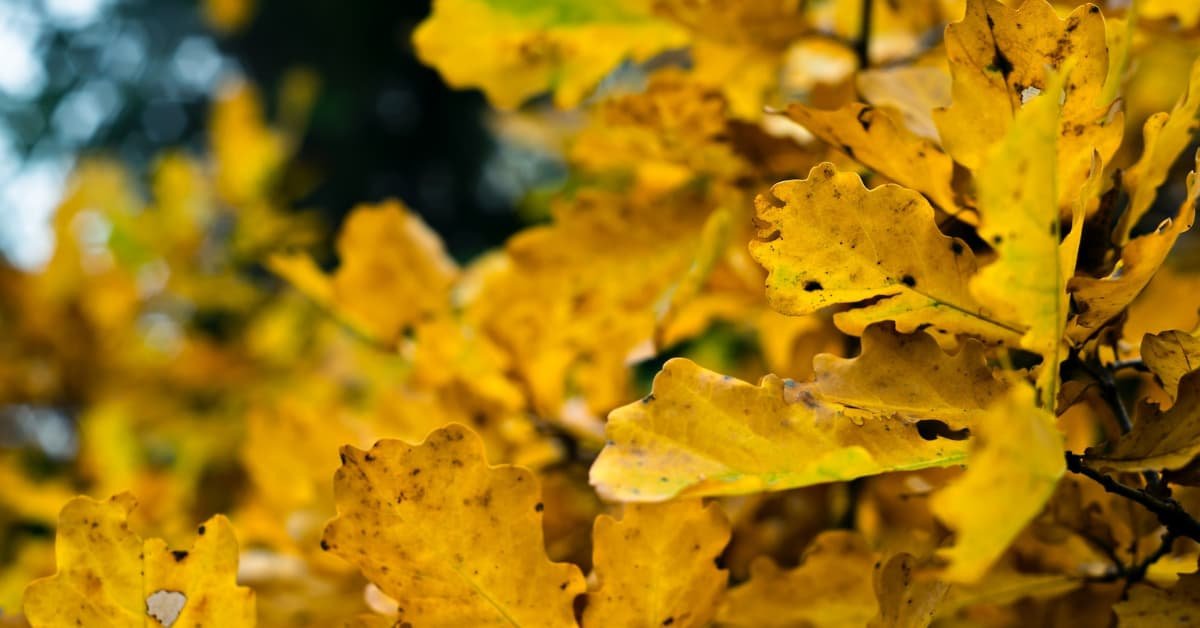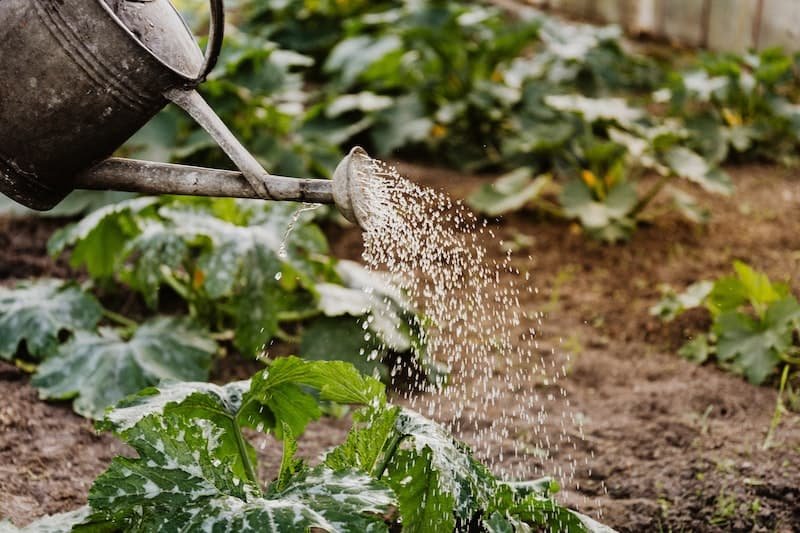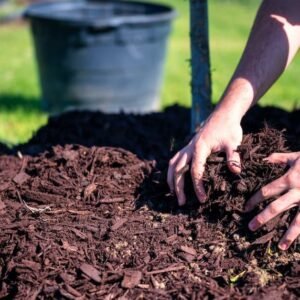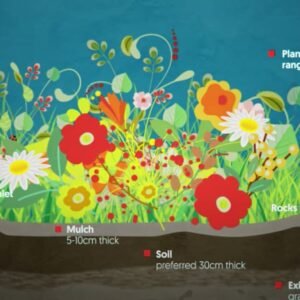
Yellowing of leaves is a common problem that many gardeners face with outdoor plants. While it may seem like a minor issue, yellow leaves on outdoor plants can show a larger problem with the health of the plant.
Here, we will explore the 10 most common reasons why outdoor plant leaves turn yellow and provide solutions for each.
In the following sections, we will detail the various factors that can cause yellow leaves on outdoor plants. We will also provide practical solutions for each.
Short Summary
- Yellowing leaves on outdoor plants are caused by various factors. Some factors include nutrient deficiencies, pests, diseases, and environmental factors.
- Proper maintenance of plant health requires enough light and water. Also, slow-release organic fertilizers, and a balance of macronutrients and micronutrients.
- Soil amendments, cover crops, and crop rotation can improve soil fertility. It can also prevent soil-borne diseases and pests.
- Prevention and treatment of yellowing leaves can include proper pest control, disease management, and pruning. Also, improving drainage, monitoring soil moisture and pH levels, and using organic fertilizers. Consulting with an expert may be necessary in severe cases.
Causes of Yellowing Leaves
Yellowing leaves on outdoor plants can be caused by a variety of factors. Chlorosis, pests, and diseases can all lead to yellowing leaves.
Chlorosis is caused by a lack of chlorophyll, which is necessary for photosynthesis.
Pests such as spider mites, whiteflies, and aphids can also cause yellowing leaves.
These pests feed on the sap of the plant, which can lead to nutrient deficiencies and yellowing leaves.
Diseases, such as fungal and bacterial infections, can also cause yellowing leaves.
Proper pest control and disease management are essential to prevent and treat yellowing leaves.
Besides pests and diseases, yellowing leaves happen due to a lack of light, water, and excess water from poor drainage.
Also, nutrient deficiencies such as nitrogen, iron, manganese, and zinc, and high soil pH. Aging is a natural process that occurs in mature plants.
Lack of light or water can also cause yellowing leaves, as plants are unable to photosynthesize without adequate light and water.
Excess water from poor drainage can lead to root rot, which can also cause yellowing leaves.
Proper soil management, including regular testing for nutrient deficiencies and pH levels, is necessary to prevent and treat yellowing leaves.
Light and Water Factors

The availability of enough light and water are factors in maintaining the health of outdoor plants.
Lack of light can cause yellowing leaves, as photosynthesis is hindered.
Plants need sunlight to produce the energy they need for growth and development.
If a plant is not receiving enough sunlight, it will use up its stored energy, causing leaves to turn yellow and die.
Pruning helps improve light exposure to the plant, but it is important to not remove too much foliage as this can cause stress to the plant.
Water is also essential for plant growth, and lack or excess of water can cause yellowing of leaves. Watering techniques are crucial, as watering too much or too little can lead to problems.
Overwatering can cause poor drainage, which can lead to root rot and yellowing leaves. Improving drainage by changing the soil or using containers with drainage holes can help prevent this.
But, underwatering can cause the plant to wilt and leaves to turn yellow and brown. It is important to water, ensuring the soil is evenly moist.
Monitoring the soil moisture and adjusting watering can help prevent yellowing leaves.
Providing enough light and water is essential in maintaining the health and vitality of outdoor plants.
Proper watering techniques and improving drainage can help prevent yellowing leaves caused by lack or excess water. Pruning can also help improve light exposure to the plant.
By monitoring and addressing these factors, yellowing leaves can be prevented and outdoor plants can thrive.
Nutrient and pH Deficiencies
Maintaining proper soil nutrient levels and pH balance is essential for the healthy growth and development of outdoor plants.
Nutrient deficiencies, such as nitrogen, iron, manganese, and zinc, can cause yellowing of leaves.
Also, soil with a pH above 7 can cause iron deficiency in plants. Plants with high iron needs require acidic soil.
Some of these plants include blueberries, rhododendrons, and azaleas.
To diagnose nutrient deficiencies and pH imbalances, soil testing is recommended.
Based on the results, appropriate fertilizer application can be made to correct the deficiencies.
Slow-release organic fertilizer is a good option for outdoor plants. They release nutrients gradually and maintain a consistent nutrient supply.
Avoid over-fertilizing, as it can damage plants and cause further problems.
By maintaining proper soil nutrient levels and pH balance, outdoor plants can remain healthy and vibrant.
Solutions and Fixes
To improve soil quality, fertilizers should be used based on soil test results. For outdoor plants, use slow-release organic fertilizers.
This is to prevent excessive fertilization and nutrient loss.
The choice of fertilizer and the amount applied should be customized according to the plant’s specific requirements.
Outdoor plants need nitrogen, phosphorus, and potassium in larger quantities.
Calcium, magnesium, and sulfur are secondary macronutrients.
Micronutrients like iron, manganese, zinc, and copper are also important. These are needed in smaller quantities for healthy plant growth.
Adding soil amendments such as compost, peat moss, and vermiculite can enhance soil structure and water retention. They will also provide some nutrients to the plants.
Take preventive measures to avoid nutrient deficiencies and pH imbalances in the soil.
Planting cover crops or green manure can help improve soil fertility and structure.
This can also reduce erosion and weed growth. Use crop rotation to prevent soil-borne diseases and pests from building up in the soil.
Some tips for nutrient deficiencies and pH imbalances include a visual inspection of the plants.
Look for symptoms of yellowing, stunted growth, or leaf drop.
Test the soil to determine the nutrient and pH levels. Make adjustments based on the results of the soil test, such as adding lime to raise the pH or adding sulfur to lower the pH.
Proper soil management practices and regular monitoring can help maintain healthy outdoor plants. This will prevent the yellowing of leaves.
| Fertilizer Type | Nutrients | Advantages | Disadvantages |
|---|---|---|---|
| Synthetic | High in nutrients | Quick release | Risk of over-fertilization |
| Organic | Slow release | Improves soil health | Lower nutrient content |
| Compost | Improves soil structure | Adds micronutrients | Slow acting |
| Manure | Adds organic matter | Adds micronutrients | Risk of pathogens and weed seeds |
Additional Considerations
The proper management of soil fertility and nutrient levels requires an approach that is more than applying fertilizers.
Soil testing is important to help gardeners identify mineral deficiencies that may be causing yellow leaves on outdoor plants.
Soil tests can determine the pH level of the soil, as well as the availability of key nutrients such as iron, nitrogen, and manganese.
In addition to soil testing, it is important to select plants that are well-suited to the local soil and climate conditions.
Plants that are local to the environment will be more likely to thrive and resist diseases and pests.
It is also essential to pay close attention to the symptoms of yellowing leaves and other plant problems.
If yellowing leaves are accompanied by stunted growth, it may indicate a more severe nutrient deficiency or pest infestation.
In such cases, it may be necessary to consult with a gardening expert or horticulturist to determine the best course of action.
By taking a proactive and holistic approach to plant care, gardeners can enjoy healthier, more vibrant outdoor plants.
Plants that are better able to withstand the challenges of the natural environment.
FAQs:
Are there any natural remedies for fixing yellow leaves on outdoor plants?
Yes, these include using compost, mulch, and natural insect repellents. As well as adjusting soil pH and providing proper nutrients and water. Consult with a gardening expert for specific recommendations.
Can over-fertilizing outdoor plants cause the yellowing of leaves?
Over-fertilizing outdoor plants can cause the yellowing of leaves due to nutrient burn. This is a common mistake in fertilizing.
How can you tell the difference between yellowing caused by pests or diseases and yellowing caused by nutrient deficiencies?
Yellowing caused by pests or diseases can be diagnosed through careful observation of the leaves and the presence of insects or fungal growth. Nutrient deficiencies can be identified through soil analysis and corrected with organic fertilizers, proper watering habits, pruning techniques, sunlight requirements, and pH balance adjustments. Plant age and nutrient imbalances can also contribute to yellowing.
Do different types of outdoor plants have different nutrient requirements for healthy foliage?
Different types of plants have varying nutrient requirements based on their species, growth stage, and soil type.
Can extreme heat or cold weather conditions cause the yellowing of leaves on outdoor plants?
Extreme heat or cold weather conditions alone may not cause the yellowing of leaves on outdoor plants. But, seasonal changes and soil quality can affect plant health. Pollution and sunlight can also have an impact on the yellowing of leaves in outdoor plants.



